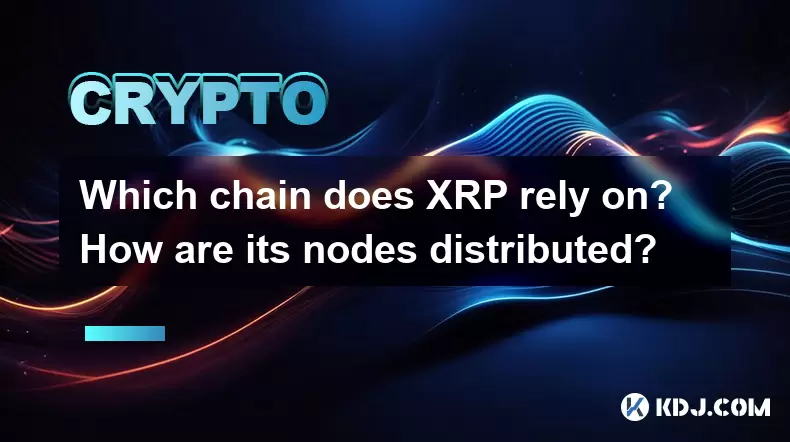-
 Bitcoin
Bitcoin $107,461.2530
0.65% -
 Ethereum
Ethereum $2,425.6945
-0.64% -
 Tether USDt
Tether USDt $1.0003
-0.01% -
 XRP
XRP $2.1844
4.49% -
 BNB
BNB $646.3777
0.36% -
 Solana
Solana $146.6972
3.90% -
 USDC
USDC $1.0000
0.00% -
 TRON
TRON $0.2744
1.17% -
 Dogecoin
Dogecoin $0.1631
1.28% -
 Cardano
Cardano $0.5609
1.22% -
 Hyperliquid
Hyperliquid $37.0726
2.08% -
 Bitcoin Cash
Bitcoin Cash $497.3222
-0.12% -
 Sui
Sui $2.7220
3.19% -
 Chainlink
Chainlink $13.1487
0.79% -
 UNUS SED LEO
UNUS SED LEO $9.0787
0.68% -
 Avalanche
Avalanche $17.6542
1.11% -
 Stellar
Stellar $0.2377
1.49% -
 Toncoin
Toncoin $2.8426
0.81% -
 Shiba Inu
Shiba Inu $0.0...01140
1.72% -
 Litecoin
Litecoin $85.2565
0.62% -
 Hedera
Hedera $0.1475
2.69% -
 Monero
Monero $314.1893
2.28% -
 Bitget Token
Bitget Token $4.6752
0.90% -
 Dai
Dai $1.0001
0.02% -
 Polkadot
Polkadot $3.3425
1.28% -
 Ethena USDe
Ethena USDe $1.0001
0.02% -
 Uniswap
Uniswap $6.9500
1.23% -
 Pi
Pi $0.5304
-3.13% -
 Pepe
Pepe $0.0...09311
0.91% -
 Aave
Aave $254.6674
-1.33%
Which chain does XRP rely on? How are its nodes distributed?
XRP operates on the Ripple Consensus Ledger, using a unique consensus protocol and a globally distributed network of nodes for fast, secure transactions.
May 12, 2025 at 03:08 pm

XRP, commonly known as Ripple, is a cryptocurrency that has garnered significant attention within the crypto community for its unique features and potential use cases. One of the critical aspects of understanding XRP is knowing the blockchain it relies on and how its nodes are distributed. In this article, we delve into these two crucial elements of XRP's infrastructure.
The Blockchain XRP Relies On
XRP operates on the Ripple Consensus Ledger (RCL), also known simply as the XRP Ledger. This is a decentralized, open-source blockchain that is fundamentally different from other popular blockchains like Bitcoin and Ethereum. The Ripple Consensus Ledger is designed to facilitate fast and efficient transactions, making it particularly suitable for financial institutions and cross-border payments.
The Ripple Consensus Ledger uses a consensus protocol that is distinct from the proof-of-work or proof-of-stake mechanisms used by other cryptocurrencies. Instead, it employs a distributed consensus mechanism where a group of trusted nodes, known as validators, agree on the state of the ledger. This consensus process ensures that transactions are validated quickly and efficiently, typically within seconds.
How Nodes Are Distributed in the XRP Ledger
The distribution of nodes in the XRP Ledger is a critical aspect of its operation and security. Nodes in the XRP network are responsible for maintaining the ledger, validating transactions, and ensuring the integrity of the network.
Nodes in the XRP Ledger are geographically distributed across the globe. This global distribution helps enhance the network's resilience and performance. The nodes are operated by a variety of entities, including financial institutions, exchanges, and individual enthusiasts. This diversity in node operators contributes to the decentralization and robustness of the network.
To become a node in the XRP Ledger, one must set up and run a server that adheres to the XRP Ledger protocol. This involves downloading and configuring the necessary software, which is freely available from the XRP Ledger's official repository. Once set up, the node can begin participating in the consensus process and contributing to the network's operation.
The Role of Validators in the XRP Ledger
Validators play a crucial role in the XRP Ledger's consensus mechanism. Validators are nodes that have been selected to participate in the consensus process. They are responsible for proposing new ledger versions and voting on the validity of transactions.
The selection of validators is not centralized; instead, it is based on a trust-based system. Each node operator can configure their own list of trusted validators, known as the Unique Node List (UNL). The UNL determines which validators a node will trust for consensus decisions. This system allows for a degree of flexibility and decentralization in the selection of validators.
To become a validator, one must meet certain technical requirements and maintain a high level of uptime and performance. Validators must also adhere to the rules and protocols set by the XRP Ledger community. This includes maintaining the integrity of the ledger and ensuring that transactions are processed fairly and efficiently.
The Process of Setting Up an XRP Node
Setting up an XRP node involves several steps, each of which is crucial for ensuring the node operates correctly within the network. Here is a detailed guide on how to set up an XRP node:
- Download the XRP Ledger software: Visit the official XRP Ledger repository and download the latest version of the software.
- Configure the server: Set up a server that meets the minimum hardware requirements specified by the XRP Ledger documentation. This typically includes a decent amount of RAM and storage.
- Install and configure the software: Follow the installation instructions provided in the XRP Ledger documentation. This involves setting up the necessary configuration files and ensuring that the server is properly connected to the internet.
- Join the network: Once the software is installed and configured, the node will automatically connect to the XRP Ledger network. It will begin syncing with the existing ledger and participating in the consensus process.
- Configure the Unique Node List (UNL): Set up the UNL to specify which validators the node will trust. This can be done by editing the configuration files and specifying the public keys of the trusted validators.
- Monitor and maintain the node: Regularly monitor the node's performance and ensure that it is operating correctly. This includes checking for updates to the XRP Ledger software and applying them as necessary.
Security Considerations for XRP Nodes
Security is a paramount concern for any node operator in the XRP Ledger. Ensuring the security of an XRP node involves several measures, including:
- Keeping software up to date: Regularly update the XRP Ledger software to protect against known vulnerabilities and ensure the node is running the latest version.
- Implementing network security: Use firewalls and other network security measures to protect the node from unauthorized access and attacks.
- Securing the server: Ensure that the server hosting the node is physically secure and protected against unauthorized access.
- Monitoring for suspicious activity: Regularly monitor the node's logs and other indicators for signs of suspicious activity or potential security breaches.
The Impact of Node Distribution on XRP's Performance
The distribution of nodes across the XRP Ledger has a significant impact on the network's performance and reliability. A geographically diverse node distribution helps ensure that the network remains operational even in the face of regional disruptions. This is particularly important for a cryptocurrency like XRP, which is designed to facilitate fast and reliable cross-border payments.
The diversity of node operators also contributes to the decentralization of the network. By having a wide range of entities operating nodes, the XRP Ledger reduces the risk of any single entity gaining control over the network. This decentralization enhances the security and integrity of the ledger, making it more resistant to attacks and manipulation.
Frequently Asked Questions
Q: Can anyone become a validator in the XRP Ledger?
A: Yes, anyone can become a validator in the XRP Ledger, provided they meet the technical requirements and maintain a high level of performance and uptime. However, becoming a validator trusted by a significant portion of the network requires building a reputation and gaining the trust of other node operators.
Q: How does the consensus process in the XRP Ledger differ from other cryptocurrencies?
A: The consensus process in the XRP Ledger uses a distributed consensus mechanism where trusted nodes, known as validators, agree on the state of the ledger. This is different from proof-of-work or proof-of-stake mechanisms used by other cryptocurrencies, which rely on mining or staking to validate transactions.
Q: What are the hardware requirements for running an XRP node?
A: The hardware requirements for running an XRP node include a server with at least 4GB of RAM and sufficient storage space to store the ledger. The exact requirements may vary depending on the specific configuration and the number of transactions the node needs to process.
Q: How can I ensure the security of my XRP node?
A: To ensure the security of an XRP node, keep the software up to date, implement network security measures, secure the server physically, and monitor for suspicious activity. Regularly reviewing and updating security protocols is also crucial to maintaining the node's integrity.
Disclaimer:info@kdj.com
The information provided is not trading advice. kdj.com does not assume any responsibility for any investments made based on the information provided in this article. Cryptocurrencies are highly volatile and it is highly recommended that you invest with caution after thorough research!
If you believe that the content used on this website infringes your copyright, please contact us immediately (info@kdj.com) and we will delete it promptly.
- Across Crypto Project Faces Heat: Secret $23M Transfer Sparks Governance Debate
- 2025-06-28 16:30:13
- Trump Coin's Wild Ride: Liquidity Drain, Exchange Deposits, and What It Means for Binance & OKX
- 2025-06-28 16:50:13
- Trump, Memecoin Mania, and Whale Watching: A New York Minute in Crypto
- 2025-06-28 16:30:13
- Shiba Inu, Lending Coins, and Early Holders: A New Frontier
- 2025-06-28 16:51:59
- Meme Coins in July 2025: Investing in the Future of Hype?
- 2025-06-28 16:51:59
- SUI's Trending Surge: Decoding the Reasons Behind the Hype
- 2025-06-28 16:55:12
Related knowledge

How to customize USDT TRC20 mining fees? Flexible adjustment tutorial
Jun 13,2025 at 01:42am
Understanding USDT TRC20 Mining FeesMining fees on the TRON (TRC20) network are essential for processing transactions. Unlike Bitcoin or Ethereum, where miners directly validate transactions, TRON uses a delegated proof-of-stake (DPoS) mechanism. However, users still need to pay bandwidth and energy fees, which are collectively referred to as 'mining fe...

USDT TRC20 transaction is stuck? Solution summary
Jun 14,2025 at 11:15pm
Understanding USDT TRC20 TransactionsWhen users mention that a USDT TRC20 transaction is stuck, they typically refer to a situation where the transfer of Tether (USDT) on the TRON blockchain has not been confirmed for an extended period. This issue may arise due to various reasons such as network congestion, insufficient transaction fees, or wallet-rela...

How to cancel USDT TRC20 unconfirmed transactions? Operation guide
Jun 13,2025 at 11:01pm
Understanding USDT TRC20 Unconfirmed TransactionsWhen dealing with USDT TRC20 transactions, it’s crucial to understand what an unconfirmed transaction means. An unconfirmed transaction is one that has been broadcasted to the blockchain network but hasn’t yet been included in a block. This typically occurs due to low transaction fees or network congestio...

How to check USDT TRC20 balance? Introduction to multiple query methods
Jun 21,2025 at 02:42am
Understanding USDT TRC20 and Its ImportanceUSDT (Tether) is one of the most widely used stablecoins in the cryptocurrency market. It exists on multiple blockchain networks, including TRC20, which operates on the Tron (TRX) network. Checking your USDT TRC20 balance accurately is crucial for users who hold or transact with this asset. Whether you're sendi...

What to do if USDT TRC20 transfers are congested? Speed up trading skills
Jun 13,2025 at 09:56am
Understanding USDT TRC20 Transfer CongestionWhen transferring USDT TRC20, users may occasionally experience delays or congestion. This typically occurs due to network overload on the TRON blockchain, which hosts the TRC20 version of Tether. Unlike the ERC20 variant (which runs on Ethereum), TRC20 transactions are generally faster and cheaper, but during...

The relationship between USDT TRC20 and TRON chain: technical background analysis
Jun 12,2025 at 01:28pm
What is USDT TRC20?USDT TRC20 refers to the Tether (USDT) token issued on the TRON blockchain using the TRC-20 standard. Unlike the more commonly known ERC-20 version of USDT (which runs on Ethereum), the TRC-20 variant leverages the TRON network's infrastructure for faster and cheaper transactions. The emergence of this version came as part of Tether’s...

How to customize USDT TRC20 mining fees? Flexible adjustment tutorial
Jun 13,2025 at 01:42am
Understanding USDT TRC20 Mining FeesMining fees on the TRON (TRC20) network are essential for processing transactions. Unlike Bitcoin or Ethereum, where miners directly validate transactions, TRON uses a delegated proof-of-stake (DPoS) mechanism. However, users still need to pay bandwidth and energy fees, which are collectively referred to as 'mining fe...

USDT TRC20 transaction is stuck? Solution summary
Jun 14,2025 at 11:15pm
Understanding USDT TRC20 TransactionsWhen users mention that a USDT TRC20 transaction is stuck, they typically refer to a situation where the transfer of Tether (USDT) on the TRON blockchain has not been confirmed for an extended period. This issue may arise due to various reasons such as network congestion, insufficient transaction fees, or wallet-rela...

How to cancel USDT TRC20 unconfirmed transactions? Operation guide
Jun 13,2025 at 11:01pm
Understanding USDT TRC20 Unconfirmed TransactionsWhen dealing with USDT TRC20 transactions, it’s crucial to understand what an unconfirmed transaction means. An unconfirmed transaction is one that has been broadcasted to the blockchain network but hasn’t yet been included in a block. This typically occurs due to low transaction fees or network congestio...

How to check USDT TRC20 balance? Introduction to multiple query methods
Jun 21,2025 at 02:42am
Understanding USDT TRC20 and Its ImportanceUSDT (Tether) is one of the most widely used stablecoins in the cryptocurrency market. It exists on multiple blockchain networks, including TRC20, which operates on the Tron (TRX) network. Checking your USDT TRC20 balance accurately is crucial for users who hold or transact with this asset. Whether you're sendi...

What to do if USDT TRC20 transfers are congested? Speed up trading skills
Jun 13,2025 at 09:56am
Understanding USDT TRC20 Transfer CongestionWhen transferring USDT TRC20, users may occasionally experience delays or congestion. This typically occurs due to network overload on the TRON blockchain, which hosts the TRC20 version of Tether. Unlike the ERC20 variant (which runs on Ethereum), TRC20 transactions are generally faster and cheaper, but during...

The relationship between USDT TRC20 and TRON chain: technical background analysis
Jun 12,2025 at 01:28pm
What is USDT TRC20?USDT TRC20 refers to the Tether (USDT) token issued on the TRON blockchain using the TRC-20 standard. Unlike the more commonly known ERC-20 version of USDT (which runs on Ethereum), the TRC-20 variant leverages the TRON network's infrastructure for faster and cheaper transactions. The emergence of this version came as part of Tether’s...
See all articles
























































































